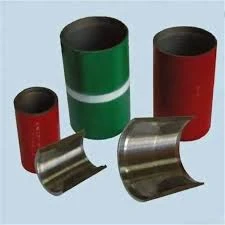- Afrikaans
- Albanian
- Amharic
- Arabic
- Armenian
- Azerbaijani
- Basque
- Belarusian
- Bengali
- Bosnian
- Bulgarian
- Catalan
- Cebuano
- Corsican
- Croatian
- Czech
- Danish
- Dutch
- English
- Esperanto
- Estonian
- Finnish
- French
- Frisian
- Galician
- Georgian
- German
- Greek
- Gujarati
- Haitian Creole
- hausa
- hawaiian
- Hebrew
- Hindi
- Miao
- Hungarian
- Icelandic
- igbo
- Indonesian
- irish
- Italian
- Japanese
- Javanese
- Kannada
- kazakh
- Khmer
- Rwandese
- Korean
- Kurdish
- Kyrgyz
- Lao
- Latin
- Latvian
- Lithuanian
- Luxembourgish
- Macedonian
- Malgashi
- Malay
- Malayalam
- Maltese
- Maori
- Marathi
- Mongolian
- Myanmar
- Nepali
- Norwegian
- Norwegian
- Occitan
- Pashto
- Persian
- Polish
- Portuguese
- Punjabi
- Romanian
- Russian
- Samoan
- Scottish Gaelic
- Serbian
- Sesotho
- Shona
- Sindhi
- Sinhala
- Slovak
- Slovenian
- Somali
- Spanish
- Sundanese
- Swahili
- Swedish
- Tagalog
- Tajik
- Tamil
- Tatar
- Telugu
- Thai
- Turkish
- Turkmen
- Ukrainian
- Urdu
- Uighur
- Uzbek
- Vietnamese
- Welsh
- Bantu
- Yiddish
- Yoruba
- Zulu
Understanding the Purpose and Use of a Bull Plug in Different Applications
Understanding Bull Plugs What They Are and Their Uses
A bull plug is a specific type of equipment primarily used in the oil and gas industry, particularly for well completion and testing. It plays a crucial role in managing the flow within pipelines and ensuring that pressure is appropriately maintained during various operations. In this article, we will explore the definition of a bull plug, its functions, and where it fits within the broader context of industrial applications.
What is a Bull Plug?
A bull plug is essentially a plug that is threaded to fit into a wellhead or other similar equipment. It serves to block the flow of fluids or gases inside a pipe or well, effectively sealing the system. This is particularly important during exploratory drilling or when a well has been temporarily shut down. By using a bull plug, operators can prevent any unintended release of hydrocarbons or other materials, which is crucial for safety and environmental protection.
Typically constructed from durable materials like steel or other robust alloys, bull plugs are designed to withstand high pressures and harsh conditions often encountered in the field. Their design allows them to seal securely, which not only prevents leaks but also maintains the integrity of the well during testing phases.
Functions of Bull Plugs
The primary function of a bull plug is to isolate sections of the pipeline or well
. There are several scenarios in which a bull plug becomes essential1. Testing and Maintenance During maintenance operations or testing procedures, it is vital to isolate specific sections of the system without affecting overall operations. Bull plugs facilitate this by providing a robust seal.
what is a bull plug

2. Pressure Management Managing pressure within pipes and wells is crucial for operational safety. A bull plug helps maintain the necessary pressure levels by preventing fluid or gas escape.
3. Well Control In the event of a well kick (an influx of formation fluids into a well), bull plugs can be used to regain control of the well and prevent blowouts.
4. Temporary Sealing When a well is not in use, inserting a bull plug allows for temporary sealing, protecting the well from contamination and external environmental factors.
Types of Bull Plugs
Bull plugs are available in various sizes and configurations to suit different applications. They can be designed for different pressure ratings and can come with features such as pressure relief valves or bleed ports, which allow for safe pressure management during operations. The choice of type often depends on the specific needs of the operation, including the size of the well and the type of fluids being managed.
Conclusion
In conclusion, a bull plug is an essential component in the oil and gas industry, serving multiple functions that contribute to operational safety and efficiency. Its ability to provide a reliable seal within wells and pipelines makes it invaluable during testing, maintenance, and emergency situations. As industries continue to evolve and seek safer, more efficient methods of resource extraction, the importance of reliable equipment like bull plugs remains paramount. Understanding their role helps ensure that operations run smoothly while minimizing the risks associated with fluid and gas management in challenging environments.
-
Tubing Pup Joints: Essential Components for Oil and Gas OperationsNewsJul.10,2025
-
Pup Joints: Essential Components for Reliable Drilling OperationsNewsJul.10,2025
-
Pipe Couplings: Connecting Your World EfficientlyNewsJul.10,2025
-
Mastering Oilfield Operations with Quality Tubing and CasingNewsJul.10,2025
-
High-Quality Casing Couplings for Every NeedNewsJul.10,2025
-
Boost Your Drilling Efficiency with Premium Crossover Tools & Seating NipplesNewsJul.10,2025







